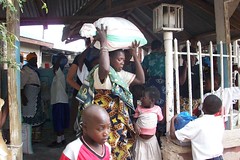My brain has been veering between trepidation ("Am I really going to do this?"), justification ("Vanilla Bean has 'bean' right in the name. Therefore I can eat fists-full of ice cream."), excitement ("This is going to be a really powerful experience!"), and fear ("No seriously...am I really going to do this?").

This mental mishmash has just gotten worse over the last few days. I've found myself freaked out about cooking. I’ve been preemptively saddened by the tragic loss of delicious trans-fats. I've been consumed by assumed legalism: Am I "allowed" to eat Rice Chex? How many additional vegetables, spices, or foodstuffs can I cook with before it becomes "cheating"? Will whatever the "-A-Roni" is in "Rice-A-Roni" condemn me?

But as I said, I'm doing this wrong. The energy I've spent mentally kvetching has been a complete waste. Fear, guilt, shame, and legalism are absolutely not what this month is about. It is about the intentionality of using my mental energy to draw closer to God, and to become increasingly and tangibly aware of His vulnerable children around the world. And it is incredibly powerful and comforting to know that I won’t be alone in all of this.
Don’t be afraid to admit to the fear, tedium, stress, and irritation this month will bring—just don’t dwell on it. Dwell on Him. And remember: we’re all in this together.
Now if you’ll excuse me, I have 45 minutes left before March 1, and I have a half a pizza left in the fridge to finish.


